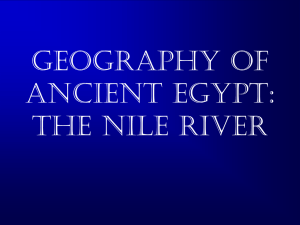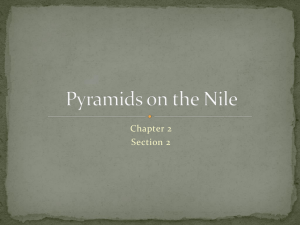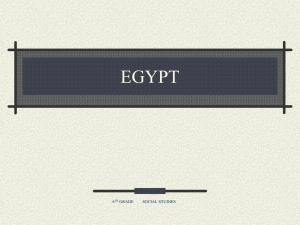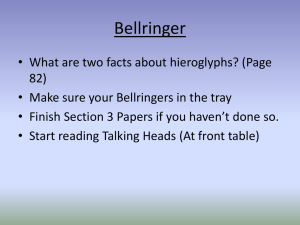The Gift of the Nile
advertisement
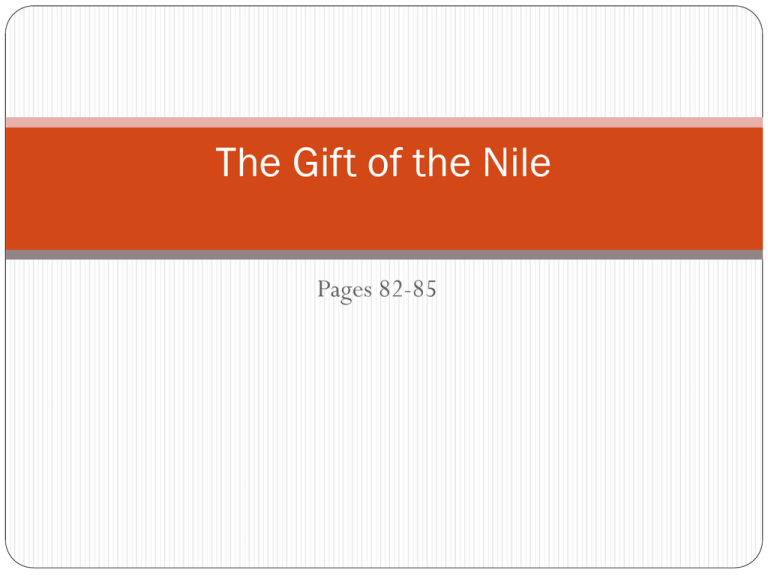
The Gift of the Nile Pages 82-85 Fun Facts about the Nile River World’s longest river Flows north over 4,000 miles from the mountains in east Africa Flows through modern Uganda, Ethiopia, Sudan, and Egypt. Empties into the Mediterranean Sea Separates into the Nile delta Floods its banks every year Egypt’s major resource Delta: A very fertile, flat land made of silt dropped by a river as it grains into a larger body of water. Map View Satellite View Lower Egypt Northern Egypt is called Lower Egypt because it lies “lower”, or downstream. Upper Egypt The south is “upstream”. The Nile cuts through some cliffs and desert sands. Shadoof A tool used to lift water into the fields. Upper and Lower Egypt UPPER EGYPT LOWER EGYPT Southern Northern Upstream Downstream Nile River Valley Nile Delta Stone cliffs Fertile Desert sands lowlands Flooding Causes: The rainy season from May to September had heavy rainfall that caused the river to rise, carrying silt as it flows North. When they reach Egypt they slow down and flood the banks. Effects: Too much=villages destroyed and animals drowned Too little=crops would fail Right amount=fertile soil and Egyptian agriculture would thrive Actions taken: Used an irrigation system that included canals Used a shadoof to lift water into the fields Built a “Nilometer”, or special staircase with measured steps, to keep track of how much flooding took place Hymn to the Nile Why is Egypt called the “Gift of the Nile”? This passage praises the Nile like a God for everything it provides for the people of Egypt. Egypt is called the “Gift of the Nile” because without the Nile the Egyptian civilization would not have been possible. The Nile River made agriculture possible in the dry, desert regions of Egypt and made the Nile Delta lowlands very fertile. The prosperity from agriculture allowed the Egyptians to have specialization of jobs, which increased trade. The Nile also provided a great source of transportation for the people of Egypt, allowing them to gain wealth through trade.

